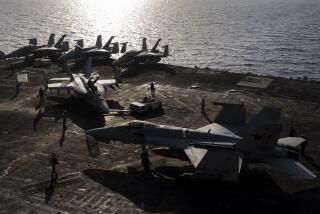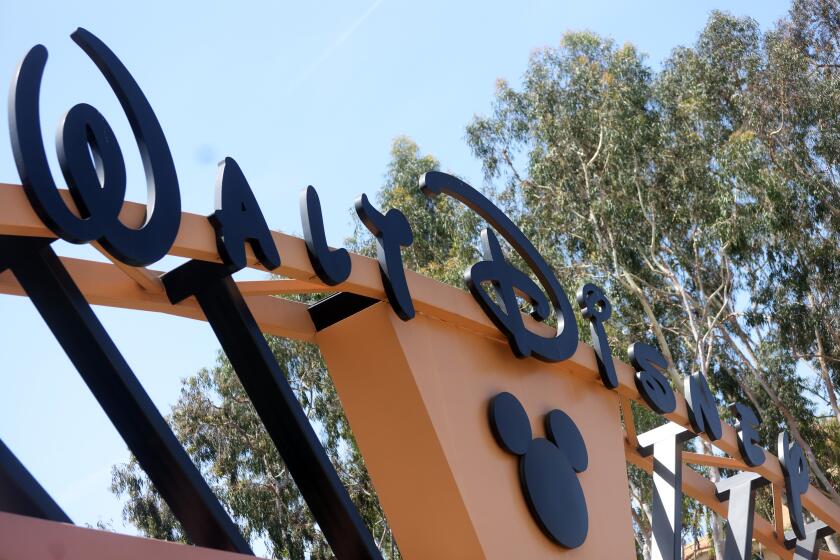90 Grounded Attack Jets Will Get New Engines, Navy Says
- Share via
SAN DIEGO — The Navy decided Wednesday to replace engines on each of the 90 light attack jets that were grounded aboard aircraft carriers and at two flight training bases because of faulty turbine blades.
Navy spokesman Lt. Dave Morris in Washington said the Navy will begin by pulling the engines out of the planes on aircraft carriers and sending them back to rework facilities, where mechanics will determine if they have defective blades.
Navy officials cannot say how long the replacement program will take--or how much it will cost--but they estimated that it would last “a matter of months.”
The Times reported Wednesday that the Navy had ordered 90 of the A-7E Corsair IIs grounded after it learned that blades with unusually high lead content snapped off in mid-flight and caused two plane crashes. Navy officials believe that at least one other crash was caused by the faulty blades, and they are investigating four recent crashes in the Pacific fleet.
The Navy had said Tuesday that it intended to inspect the $1.8-million engines on each plane before deciding whether to replace them.
The announcement Wednesday means that the Navy will have to find replacement engines for all 90 airplanes in order to determine which blades have unusually high levels of lead.
The Navy does not have 90 spare engines in operating condition to replace the motors, a Navy source said.
Problems Began in 1983
Meanwhile, spokesmen for the Navy and the manufacturer of the engine said the Navy began having problems with turbine blades on the A-7E as early as 1983, when it undertook a program to retrofit the engines with new blades.
The blades, which were supposed to have a life of 1,200 flight hours, began developing problems after only 500 hours, Navy spokesmen said. The makers of the engine, Allison Gas Turbine Division of General Motors, designed a blade to last 2,000 hours and began installing them in November, 1984.
The number of the Navy’s 310 A-7E jets retrofitted was not available Wednesday. A Navy source told the Times, however, that of the 145 jets in the Pacific fleet, 20 have been retrofitted and the remaining 125 are being replaced at a rate of eight per month.
Morris would not say Wednesday which blades were found to have the problem with high lead content.
The A-7E, the backbone of the Navy’s conventional ground-attack force on 11 deployable carriers, is being phased out and replaced by $32-million supersonic F/A-18 planes.
Navy officials have said the grounding has “minimum impact” on national security.
The retrofitting program that began in 1984 replaced the turbine and combustion areas of the A-7E engines, according to Allison spokesman Donald O’Brien.
O’Brien said the program was initiated to extend the life of the jet engines until the A-7Es were phased out in the early 1990s. He said the original blade problems are not related to the current lead content troubles, which originated from a faulty batch of blades provided by Wiggan Alloys Ltd. of England.
More to Read
Inside the business of entertainment
The Wide Shot brings you news, analysis and insights on everything from streaming wars to production — and what it all means for the future.
You may occasionally receive promotional content from the Los Angeles Times.










